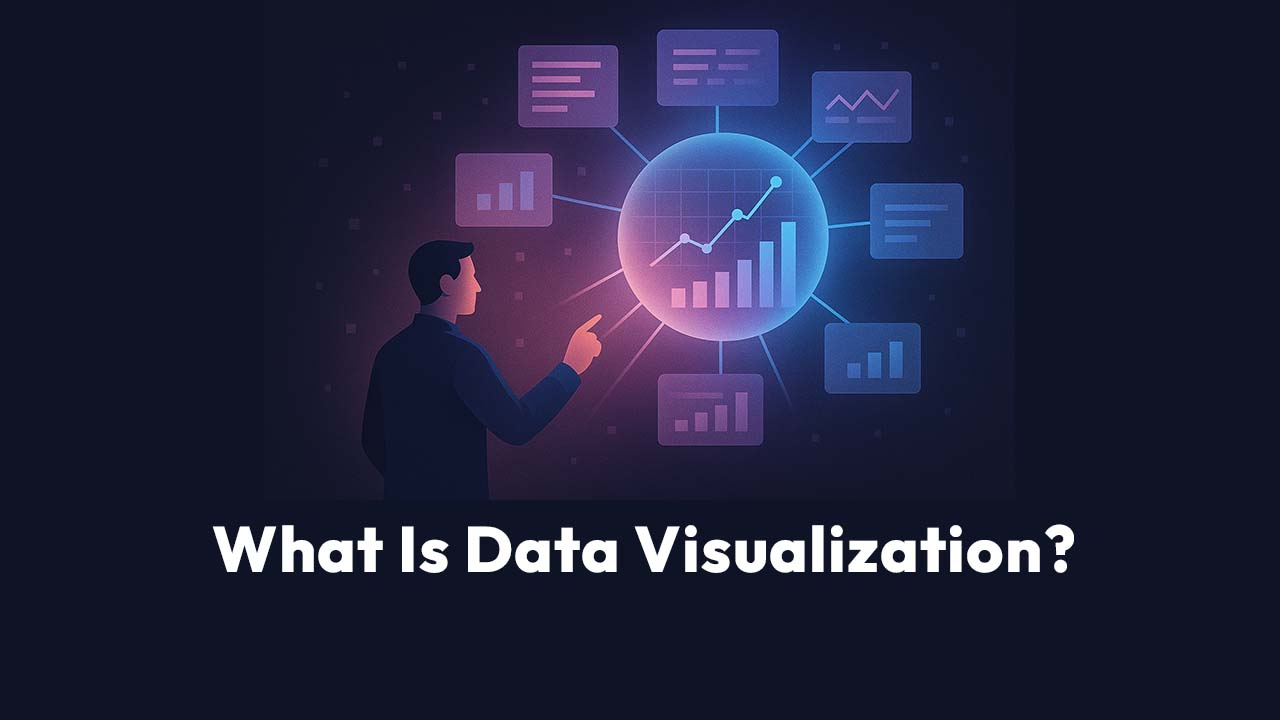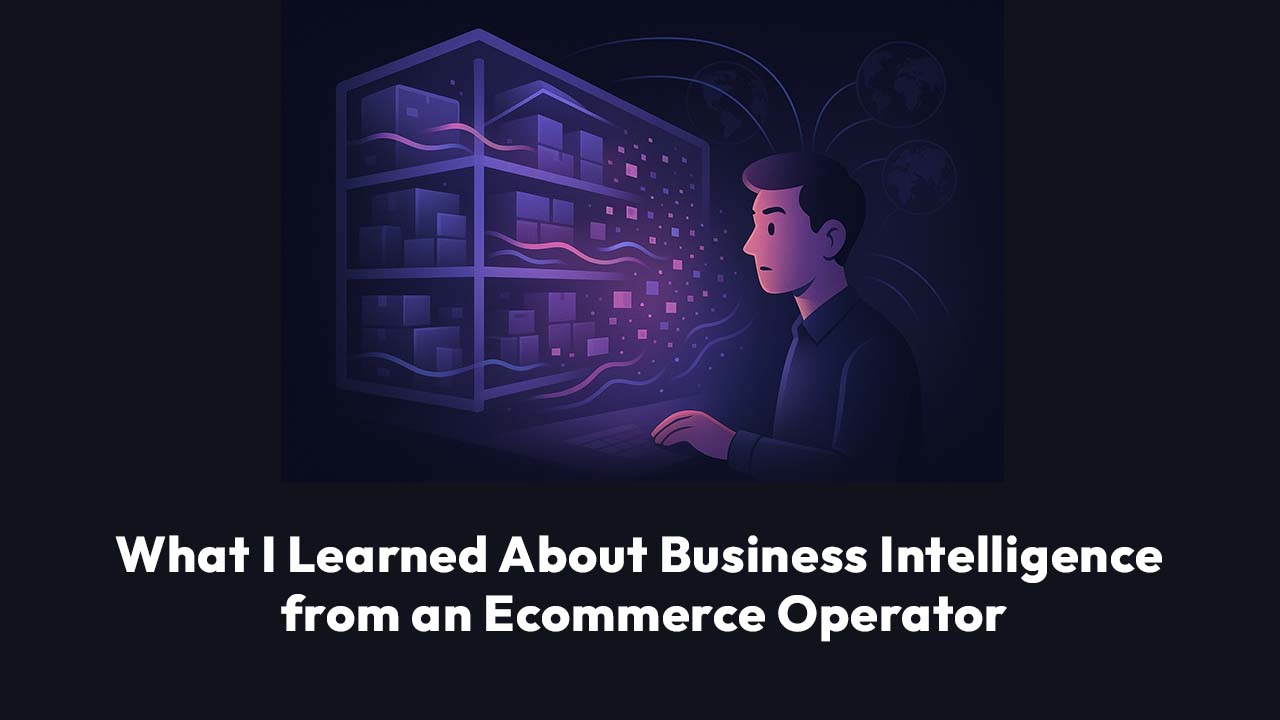A Guide to Turning Data Into Decisions
What is data visualizations?
Data visualization is the practice of converting complex datasets into visual formats like charts, graphs, and interactive dashboards that make patterns, trends, and insights immediately clear to anyone—regardless of their technical expertise.
Here's something that might surprise you: Your brain processes visual information 60,000 times faster than text. When your operations team spends hours analyzing spreadsheets, they're working against their own biology. Meanwhile, a single well-designed dashboard could deliver the same insights in seconds.
You're probably swimming in data right now. Production metrics. Supply chain analytics. Customer satisfaction scores.
The question isn't whether you have enough data—it's whether you can actually use it before your competitors do.
Why Should Business Operations Leaders Care About Data Visualization?
Let me be direct: If you're still making decisions based on dense Excel tables and 50-slide PowerPoint decks, you're leaving money on the table.
Data visualization isn't just about making pretty pictures.
It's about operational velocity.
- When your warehouse manager can glance at a heat map and immediately spot bottlenecks, that's saved hours of analysis.
- When your supply chain director can track shipments in real-time on an interactive map instead of reconciling multiple reports, that's competitive advantage.
We've seen manufacturing clients reduce quality defect analysis time from three days to three hours—simply by replacing monthly reports with interactive dashboards. The data was always there. The insights were buried.
The Hidden Cost of Poor Data Communication
Consider this scenario: Your operations team discovers a critical trend in the data. They prepare a comprehensive report. Schedule meetings. Wait for stakeholder availability. By the time everyone understands the implications, two weeks have passed. The trend has evolved. The opportunity has shifted.
Data visualization collapses that timeline.
The right chart tells the story instantly. Decisions happen in the room, not two meetings later.
Here's what effective data visualization delivers:
- Faster problem identification - Spot anomalies before they become crises
- Improved cross-functional communication - Everyone sees the same picture
- Real-time operational monitoring - Know what's happening now, not last month
- Data-driven culture - When insights are accessible, everyone asks better questions
What Types of Data Visualization Can Transform Your Operations?
Not all visualizations are created equal.
Choosing the wrong chart type is like using a hammer when you need a screwdriver.
Bar and Column Charts
Perfect for comparing performance across facilities, shifts, or product lines. When you need to answer "Which distribution center has the highest throughput?", bar charts deliver instant clarity.
Line Charts
Your go-to for tracking changes over time. Have you ever tried to identify a seasonal pattern in a table of numbers? It's painful. But plot that same data on a line chart, and the pattern jumps off the screen.
Heat Maps
Color-coded visualizations invaluable for operations spanning multiple locations. At a glance, you can see which regions are performing well (green), which need attention (yellow), and which require immediate intervention (red).
Scatter Plots and Bubble Charts
Brilliant for uncovering relationships. Does increased overtime correlate with quality defects? Do longer lead times impact customer satisfaction? These reveal connections that might otherwise go unnoticed.
Real-Time Dashboards
Where data visualization becomes mission-critical. One screen showing production line status, defect rates over 24 hours, current inventory levels, and incoming orders. Your morning standup just got 10 minutes shorter.
What Are the Best Tools for Data Visualization in Business Operations?
The "best" tool depends on your specific needs, budget, and existing technology stack. Let me walk you through the options that matter.
Tableau
The heavyweight champion. Connects to virtually any data source and creates stunning, interactive visualizations. The catch: Learning curve and enterprise pricing.
Microsoft Power BI
If you're in the Microsoft ecosystem, this is your natural choice. Integrates seamlessly with Excel and Azure. Cost advantage: Significantly more affordable than Tableau, especially with existing Microsoft licenses.
Zoho Analytics
Designed for business intelligence, excels at visualizing sales, marketing, and operational metrics. Strong for mid-sized operations.
Google Charts
Free and web-based, perfect for quick, shareable operational reports that stakeholders can access from anywhere.
Scoop Analytics
What if you could create sophisticated visualizations just by asking questions in plain English?
Scoop represents a different approach—one that removes technical barriers entirely. Instead of learning dashboard builders, operations leaders simply ask: "Show me production trends by facility for the last quarter" or "What factors are driving our quality defects?"
Why this matters for operations: Your warehouse supervisor doesn't need Tableau training. Your shift manager doesn't need to learn DAX formulas. They ask questions like they would to a colleague, and Scoop automatically creates the appropriate visualization—bar chart, line graph, heat map, whatever tells the story best.
The AI advantage: Beyond creating charts, Scoop uses machine learning to find patterns you might miss. Ask "Why did throughput drop last week?" and it investigates multiple hypotheses, identifies the root cause, and visualizes the specific factors driving the issue.
Real application: A distribution center manager uses Scoop in Slack every morning: "@Scoop show yesterday's shipping performance by region." Thirty seconds later, she has a complete visual breakdown, including anomaly detection. No separate systems. No building queries. Just instant, intelligent visualizations.
Choosing Your Tool
How Do You Create Effective Data Visualizations?
Creating visualizations is easy. Creating effective ones that improve decision-making? That's harder.
Step 1: Know Your Audience and Their Decisions
Your plant manager needs different views than your CFO. Your frontline supervisor needs different details than your VP of Operations.
Ask yourself: What decision will this visualization enable? If you can't answer that clearly, go back to the drawing board.
Step 2: Choose the Right Visualization Type
- Comparing values? → Bar chart
- Showing change over time? → Line chart
- Displaying parts of a whole? → Stacked bar chart
- Revealing relationships? → Scatter plot
- Displaying location-based data? → Heat map
The AI shortcut: Tools like Scoop can make this decision for you. Describe your data and what you're trying to understand, and the AI selects the optimal visualization type. It's like having a data visualization expert on call 24/7.
Step 3: Keep It Ruthlessly Simple
Every element should earn its place. That decorative 3D effect? Gone. That seventh color? Unnecessary.
The principle: If removing an element doesn't reduce understanding, remove it.
Step 4: Use Color with Purpose
- Red/Yellow/Green for status indicators (everyone understands traffic lights)
- Consistent colors across related dashboards
- Limited palette to avoid overwhelming viewers (5-7 colors maximum)
- Color-blind friendly choices
Step 5: Provide Essential Context
Every visualization needs:
- Clear title - "Q4 Production Output by Facility" not "Chart 1"
- Labeled axes - Don't make people guess
- Units of measurement - Tons? Pallets? Units per hour?
- Time period - When does this data represent?
- Benchmark or target - Is this good or bad performance?
Real-World Applications of Data Visualization in Operations
Supply Chain and Logistics
Challenge: A distribution company couldn't understand why some regions had higher delivery costs.
Traditional approach: Analysts spent weeks creating static reports. Each new question required another week of analysis.
The Scoop approach: The operations director asked in Slack: "Why are delivery costs higher in the Southeast region?" Scoop's AI investigated multiple hypotheses in 45 seconds, creating visualizations showing:
- Heat map of cost per delivery by zip code
- Scatter plot revealing correlation between delivery density and cost
- Bar chart comparing route efficiency across regions
Result: The visualization revealed their routing algorithm was optimized for speed, not cost, in low-density regions. Adjusting it saved $480,000 annually.
Key insight: The data existed for months. Traditional approach would have taken weeks. Natural language investigation with automatic visualization made it visible in under a minute.
Root Cause Analysis
Challenge: An operations director saw a sudden 15% drop in revenue but couldn't identify the cause.
Traditional approach: Request data from multiple systems, spend days in Excel testing hypotheses one by one.
The natural language approach: Ask: "Why did revenue drop 15% last month?"
Scoop's AI automatically:
- Tests 8 hypotheses simultaneously
- Creates visualizations for each investigation angle
- Identifies mobile checkout failures increased 340%
- Shows correlation charts proving causation
- Calculates exact impact: $430K lost
- Generates complete visual report in 45 seconds
The visualization suite included:
- Trend line showing revenue drop timing
- Heat map of error rates by device type
- Funnel chart showing checkout abandonment
- Timeline correlating errors with deployment events
Business impact: Fixed in 2 hours instead of 2 weeks. Visual evidence made the case clear to engineering immediately.
How Can You Avoid Common Data Visualization Mistakes?
Mistake 1: Visualizing Everything
The problem: Dashboards with 20 different charts that overwhelm rather than inform.
The fix: Focus on the 3-5 metrics that actually drive decisions.
The AI filter: Natural language interfaces naturally prevent this. You only see visualizations relevant to your specific question. The noise stays filtered out.
Mistake 2: Using Fancy When Simple Would Work
The problem: 3D pie charts and "innovative" chart types that confuse viewers.
The fix: Stick with standard visualization types that everyone immediately understands.
Mistake 3: Creating Static Reports in a Dynamic World
The problem: Beautiful PDFs that are outdated before they're distributed.
The fix: Build interactive dashboards with live data connections.
Modern solution: Conversational analytics platforms let you ask the same question tomorrow and get updated visualizations automatically. "Show me yesterday's metrics" always shows yesterday—whichever day you ask.
Mistake 4: Ignoring Mobile Access
The problem: Dashboards designed for monitors that are unusable on phones.
The fix: Test every visualization on mobile devices. Your supervisors need access from the floor.
Slack-integrated advantage: When visualizations live in Slack conversations, they're automatically mobile-ready. Your warehouse manager can check shipping metrics from their phone while walking the floor.
What Skills Does Your Team Need for Data Visualization?
You don't need to hire data scientists. But you need some combination of these capabilities:
- Basic data literacy - Understanding what data means
- Tool proficiency - Comfort with at least one visualization platform
- Design thinking - Knowing what makes visualizations clear
- Business context - Understanding operations well enough to visualize what matters
The Democratization Shift
Here's something that's changing: You might not need all those skills anymore.
Traditional approach: Train operations people on Tableau, teach them SQL, hope they remember it.
Natural language approach: If your team can ask questions, they can create visualizations. "Show me quality defects by product line this month" requires zero technical training.
The gap this fills: Your experienced operations people have incredible business knowledge. They know what questions to ask. They just couldn't execute the analysis before. Natural language bridges that gap.
FAQ
How much does data visualization software cost?
Excel is included with Microsoft licenses. Google Charts is free. Power BI starts around $10/user/month. Tableau ranges from free to hundreds per user monthly. Natural language platforms like Scoop typically run $15-30/user/month.
How long does it take to implement?
You can create basic charts in Excel today. Comprehensive dashboards take 2-6 weeks. Natural language platforms can start delivering value in 30 seconds—the time it takes to ask your first question.
Do I need to know coding?
Not for most business operations use cases. Tools like Tableau, Power BI, and Zoho Analytics are designed for non-programmers. Natural language platforms require zero technical knowledge—if you can ask a question, you can create a visualization.
How do I get stakeholders to actually use dashboards?
Make them relevant, accessible, and actionable. Demonstrate value early. One shortcut: Meet people where they work. Visualizations in Slack get more engagement than separate portals because there's no context switching.
How often should dashboards be updated?
Match the refresh frequency to the decision cadence. Critical metrics might update every minute. Strategic metrics might update monthly.
What's Your Next Step with Data Visualization?
Immediate Actions (This Week):
- Identify one operational pain point where better data visibility would help
- Choose a simple tool you already have access to
- Create one basic visualization addressing that pain point
Or take the fast track: Ask your first analytical question in plain English using a natural language platform.
Short-Term Actions (This Month):
- Evaluate your existing data sources
- Research appropriate tools using the comparison table above
- Start a pilot project with one high-value dashboard
- Build or identify internal capability
Strategic Actions (This Quarter):
- Develop a visualization roadmap
- Invest in training or accessibility
- Establish governance standards
- Measure impact on decision speed and quality
Conclusion
What is data visualizations? It's your competitive edge hiding in plain sight.
Your competitors have access to similar data. The difference is how quickly and effectively you turn that data into insights, and insights into action.
Data visualization isn't about making things look pretty. It's about operational excellence. It's about seeing problems before they become crises. It's about making decisions in hours instead of weeks.
The barrier to entry has never been lower. You don't need to become a data scientist. You don't need a six-month implementation project. You don't even need technical training if you choose the right tools.
The question isn't whether data visualization matters for operations leaders. The question is: How much is it costing you to wait?
Start somewhere. Start small. But start today. Because every day you're making decisions based on spreadsheets and tables is a day your competitors might be making better decisions based on visualizations.
The data is already there. You're already collecting it. You're already analyzing it. The only question is whether you're presenting it in a way that drives action.
What will you visualize first?








.png)